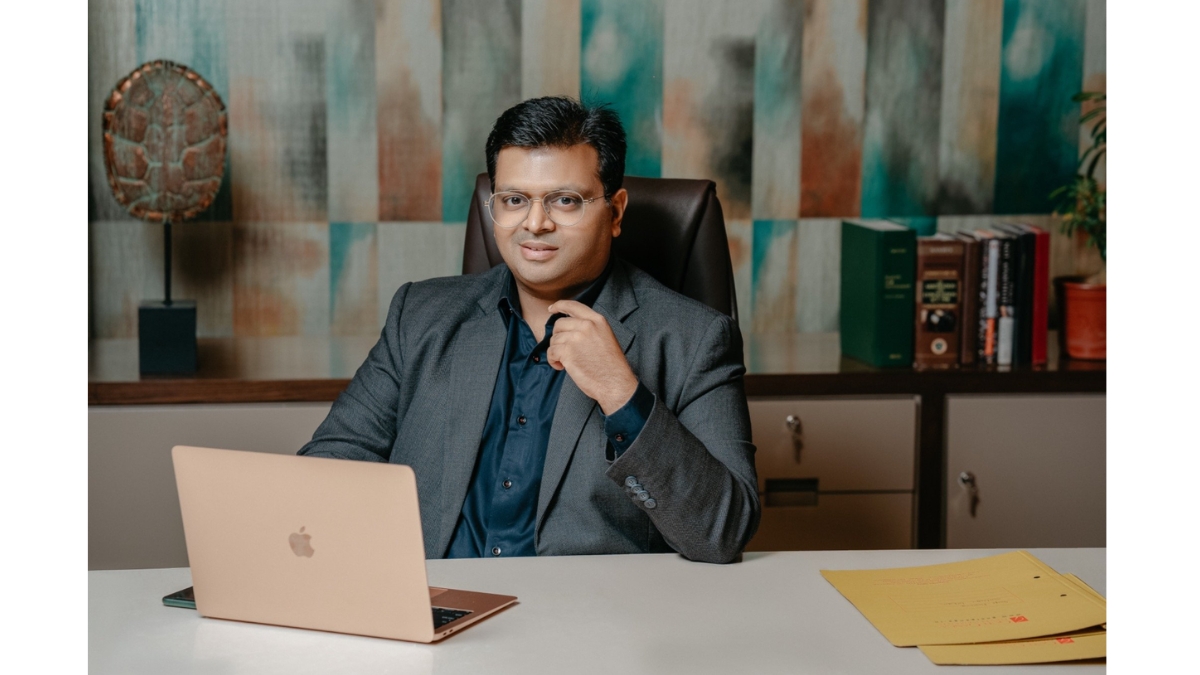IISER Bhopal Researchers Develop Organic Crystal for Highly Sensitive Pressure Sensors

The developed organic crystal – 4-trifluoromethyl phenyl isothiocyanate (4CFNCS) is flexible enough to be bent, twisted, and coiled (Representative image)
These materials are environment friendly and can be used in designing flexible electronic devices in healthcare, intelligent systems, wearables, and self-powered devices
Indian Institute of Science Education and Research Bhopal researchers have successfully developed a new, flexible organic crystal that shows potential for use in highly sensitive pressure sensors. The device fabricated with this material has high sensitivity to pressure, when compared to existing materials, making it a promising component for the future development of the technology of pressure sensors.
The developed organic crystal – 4-trifluoromethyl phenyl isothiocyanate (4CFNCS) is flexible enough to be bent, twisted, and coiled.
These crystals were developed in IISER Bhopal, and the understanding of the response of these crystals to mechanical deformation was done in collaboration with researchers from the University of Queensland and Queensland University of Technology.
The findings of the research have been published in the prestigious journal Small in a paper co-authored by Prof. Deepak Chopra, Dr. Mitradip Bhattacharjee, and their research scholars Ms Avantika Hasija and Mr Lakhvir Singh from IISER Bhopal along with Dr. Amy J. Thompson, Dr. Jack K. Clegg, Dr. John. C. McMurtrie from The University of Queensland, Australia and Ms. Megha S. N and Ms. Kiran S. R. N. Mangalampalli from SRM Institute of Science and Technology, Kattankulathur, Chennai.
Read | IIT Mandi Researchers Explain Why Listening to Sad Music Helps in Times of Sadness
Prof Deepak Chopra, Department of Chemistry, IISER Bhopal, said, “We thoroughly analyzed 4CFNCS using sophisticated computational and challenging experimental techniques such as synchrotron microfocus X-ray diffraction measurements to understand as to why these are so flexible.”
The in-depth analysis of the crystal structure showed that the way the atoms of this molecule are arranged in solids allows it to bend and stretch without breaking when subjected to mechanical stress. This helps to keep the crystal structure intact even under high pressure and impact. The slippage of molecules in multiple directions enables complex coiling motion in crystals.
Not only have the researchers uncovered the origin of flexibility in this new type of organic crystal, but they have also successfully used it to fabricate highly sensitive pressure sensors. Piezo-resistive or pressure sensors are devices that respond to pressure or force applied to them by a change in their electrical resistance. For example, piezo-resistive sensors are typically located behind the touch surface of any touch device and are activated when pressure is applied to the surface during touch. This generates a small electrical charge that is then processed.
The collaborative team combined 4CFNCS with an electrically conducting polymer, PEDOT: PSS, to make the piezo-resistive sensor.
“The composite developed using the researchers exhibited efficient piezo-resistive response, even at high-pressure ranges, resulting in at least 1.6-times improvement in sensitivity for medium pressure range, and at least 5 times in the high-pressure range across a wide range of pressures, over other known piezo-resistive materials,” said Prof. Deepak Chopra.
Flexible organic crystal piezo resistive materials such as the one developed by the team are attractive because they are sustainable and easy to work with.
Dr. Mitradip Bhattacharjee, Assistant Professor, Electrical Engineering and Computer Science, IISER Bhopal, said, “These materials can be made without harmful chemicals or high-energy conditions, making them better for the environment. Apart from the applications of touch screens, such materials will be of great use in the design of flexible electronic devices, such as those used in healthcare, intelligent systems, wearable devices, and self-powered devices.”
The researchers propose to optimize the synthesis and study variations of the basic molecule in future.
Read all the Latest Education News here

Atul Tiwari is a seasoned journalist at Mumbai Times, specializing in city news, culture, and human-interest stories. With a knack for uncovering compelling narratives, Atul brings Mumbai’s vibrant spirit to life through his writing.





